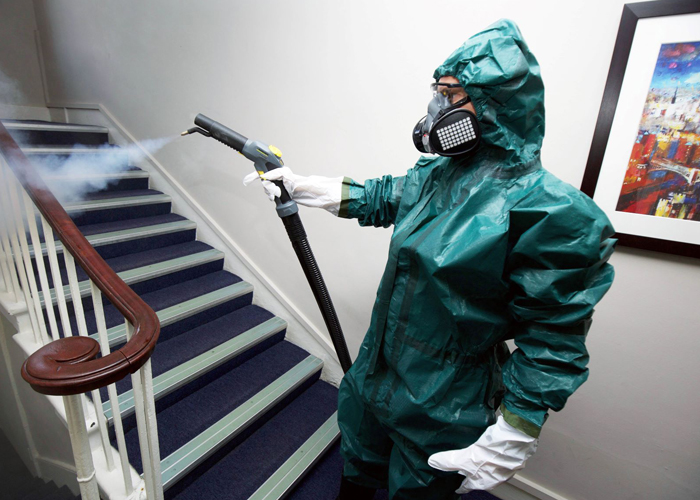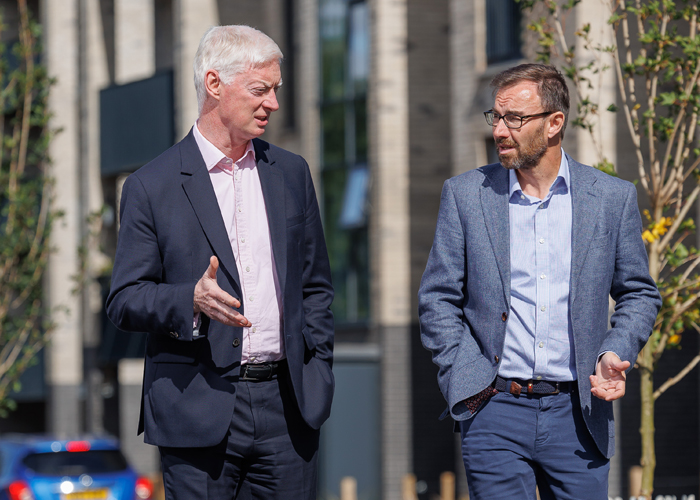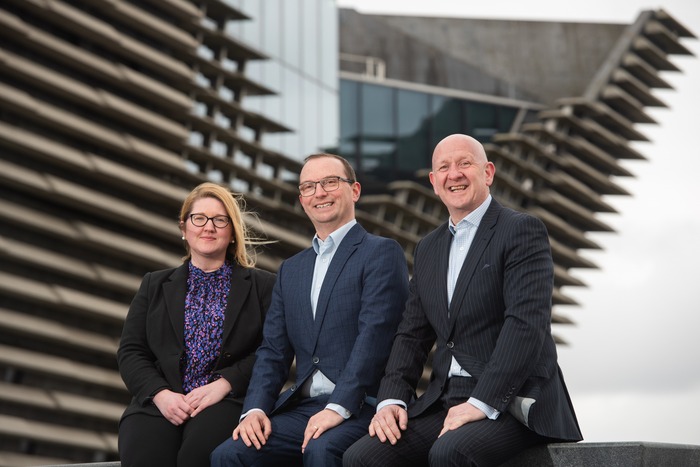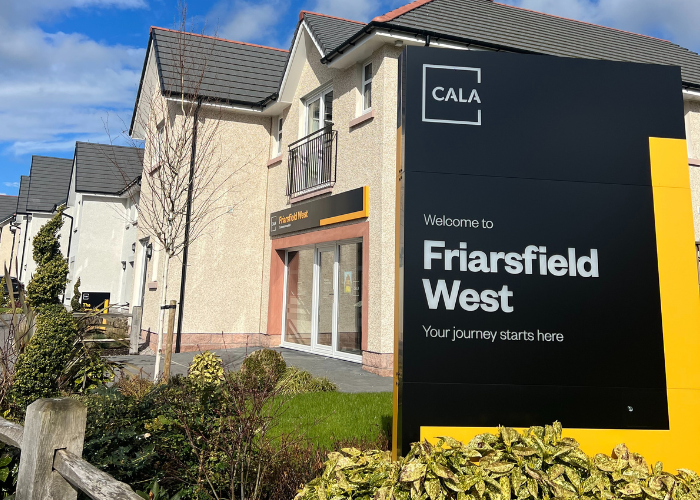THE HOLIDAY Property Bond (HPB) is delighted to announce that their latest property, Coo Palace, Borgue, Near Kirkcudbright, Galloway, Scotland will be officially opened on 26th March by The Duke of Abercorn KG.
On the opening The Duke comments “Coo Palace is a unique Grade A building which had fallen into total dereliction. Its location in co Galloway is exceptional and The Holiday Property Bond has had the imagination and courage to restore it as a luxury holiday complex, which I look forward to opening on the 26th March”.
Coo Palace will be the latest addition to the Holiday Property Bond’s one of a kind holiday property portfolio which consists of luxury villas, cosy cottages, stylish apartments and historic country houses (there are currently 33 sites across the UK & Europe).
Coo Palace, situated in the south-west of Scotland on the Galloway coastline will boast 26 properties/accommodations, comprising of two studios, 12 one-bedroom units, 10 two-bedroom units and two three-bedroom units. The property will also boast an indoor heated swimming pool with swimjet and children’s area, sauna and steam room, clubroom with DVD library and tourist information, games room, children’s play area, crazy golf, small shop and laundry.
The site offers fantastic views over Wigtown Bay and the Solway Firth and is 33 miles from Dumfries and 70 miles from Carlisle. Kirkcudbright is less than eight miles away, with a range of shops and restaurants.
An eccentric millionaire and co-founder of the Manchester department store ‘Affleck and Brown’ (the Harrods of the North), James Brown built Coo Palace for his 12 prize Belted Galloway cows in the early 20th Century.
Also known as the Corseyard Farm and Model Dairy, it comprised a milk parlour, cart shed and stabling as well as the 23m high water tower. With a keen interest in the Arts & Crafts movement, and a flair for grandeur, Brown decorated his masterpiece with a mixture of the Arts & Crafts, Art Nouveau and Italian styles in mind. It was quite the palace but, following Brown’s death in 1920, sadly fell into disrepair.
On the restoration of Coo Palace, Geoffrey Baber, Chairman of HPB says “In 1991, Coo Palace was marked by Historic Scotland as an ‘important building at risk’. The Holiday Property Bond is thrilled to have been in a position to not only save it but give it a new lease of life for future generations to enjoy, along with the opportunity to support the local economy by creating direct and indirect employment for this unspoilt and truly beautiful corner of Galloway.
At a cost of over £10million, HPB has lovingly and sympathetically rescued and restored Coo Palace. With the finest attention to detail and using the highest quality materials, the team has succeeded in creating a first-class holiday development. We wanted to stay true to the styles prevalent in the early 20th Century and we worked closely with James Brown’s granddaughter in law Elizabeth Brown who helped with the interior design part of the project.”
Full History of Coo Palace
After making his fortune, James Brown purchased the Knockbrex estate in 1894. It comprised eight adjoining farms and cottages including Corseyard now known as Coo Palace. At that time in Borgue, some thirty farms in the parish were owned by five landowners. James Brown fell in love with this beautiful corner of Scotland, a land steeped in fascinating history and outstanding natural beauty. Brown used his wealth to indulge his passion for the Arts & Crafts movement, Art Nouveau and the Italianate style. His development of exquisite buildings with ornate features brought regeneration to the Galloway area which had suffered greatly from the depression in farming since the 1870s.
When James Brown retired, he began an extensive building programme on the house and estate from 1895 until his death in 1920. Knockbrex house was rebuilt luxuriously, in a style inspired by Windsor Castle. It was extended into a fine mansion with beautiful water and rock-gardens and with enough land to indulge Brown’s passion for roses. The stables were attractively designed as was his garage, now known as Knockbrex Castle. The bathing house and Kirkandrews Kirk were additions to James Brown’s portfolio of unusual buildings most likely designed by the architect G H Higginbottom of Manchester who worked in the Arts and Crafts style. Higginbottom was associated with the cabinet maker Frank Hallows and coppersmith James Smithies both of whom Brown used in other commissions. James Brown reflected his support of the Arts and Crafts movement in many ways, from tea pots to towers and turrets.
The model dairy at Corseyard Farm was originally built for James Brown’s herd of 12 Belted Galloways. It was completed in 1914. Brown had a keen interest in preserving this local breed of cattle even before the Galloway Cattle Society was established. The dairy was built complete with stables and a water tower that became a landmark in the area. The dairy was the first in the UK to have electricity. It had state of the art glazed brick walls, a terracotta tiled floor and striking red roof. The dairy soon became known as the ‘Coo Palace’ where the brasses were polished so regularly that it was said that they were “halted with gold”.
James Brown cared about providing for his estate workers. He offered work to women and children who were paid for collecting stones from the beach to adorn the top of the walled gardens and boundary dykes. These are still to be seen today. Such was his character that he also renovated the estate workers’ cottages, which until then had been little more than hovels. He also provided a laundry where tenants’ wives could do their weekly wash. James Brown was well respected by the community and was an active member of the Parish Church.
Local Area – Things to see & Do
This beautiful part of lowland Scotland is perfect for adventurers, with an undulating coastline of rocky shoreline and sandy beaches, acres of inland forest and plenty of green spaces. The nearby towns and villages are full of culture and history, as well as dozens of other attractions to entertain all kinds of holidaymakers.
Robert Burns Home – In nearby Dumfries, the last home of the famous Scottish Poet, Robert (Rabbie) Burns is open for visitors. Admission is free and on display are a few of his paintings and artefacts, giving a unique insight into the life this great man and his wife led there. Lovingly curated, guests are shown a film of his life before being allowed to wander through the house, reading some of his letters and papers.
Elope to Gretna Green – Gretna Green the most well-known wedding venue in the country is on the eastern edge of Dumfries and Galloway, famously where young couples would elope to marry in secret! Alongside being the UK’s wedding destination, there’s a museum showing the original marriage room (still used for weddings today), and the oldest anvil (used in the wedding ceremonies) in existence.
Golf – Golfers may play a wide variety of courses, from championship links to majestic upland. Golfers may enjoy the picturesque views of the Galloway Hills and the stunning coastline. There are golf courses for all abilities. Play the championship courses on the SapphireTrail, test yourself on the Emerald Trail or simply take it quietly round the 9-hole courses on the Little Gems Trail. Try the game at the par 3 courses.
Drumlanrig Castle – This property is set in the 120,000-acre Queensberry Estate and is considered one of the most important Renaissance buildings in Scotland. Built in the 17th Century, Drumlanrig has mountain bike trails, fishing, walking routes, a playground, castle tours a country park and Victorian gardens offering plenty to do for all the family.










